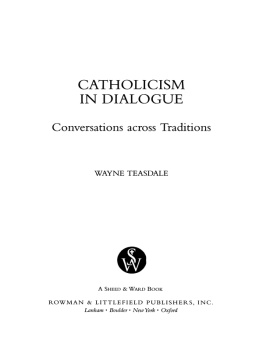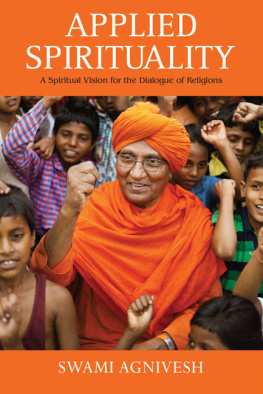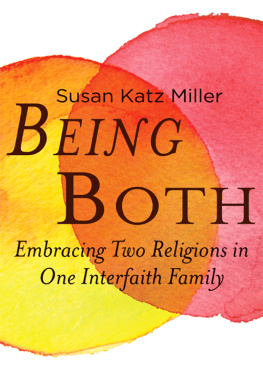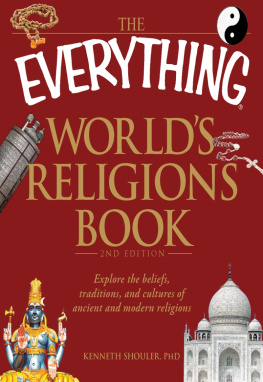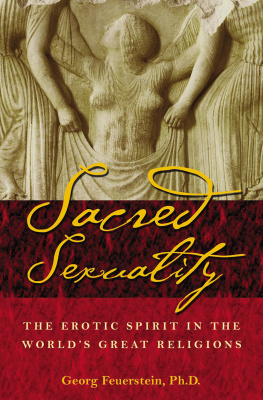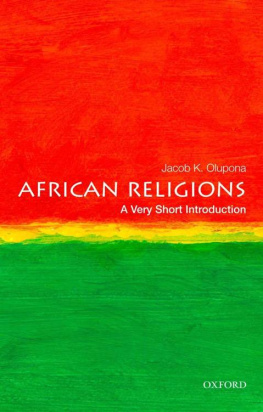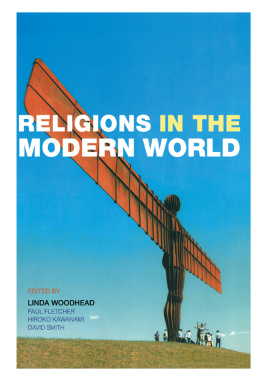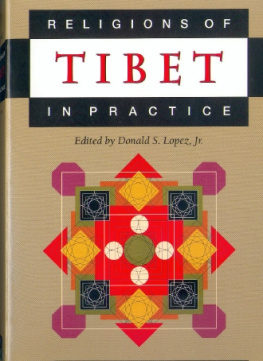Sourcebook
of the
Worlds Religions
Sourcebook
of the
Worlds Religions
An Interfaith Guide to
Religion and Spirituality
Edited by Joel Beversluis
New World Library
Novato, California

Third edition copyright 2000 by Joel Beversluis
Revised edition copyright 1995 by Joel Beversluis
First edition copyright 1993 by Council for a Parliament of the Worlds Religions
Text layout and design by Margaret Copeland, Terragraphics
All rights reserved. New articles in this edition and all previously copyrighted materials reproduced herein may not be reproduced or distributed in substantial portions without permission. Please refer to the list of acknowledgements on pages 441442 which identify those holding copyrights to both new and previously published materials. Some notices are listed in the text.
Symbols used on the cover:
Top: Wicca, Zoroastrianism, Hinduism, Taoism, Bah faith, Native American, Christianity Bottom: Judaism, Sikhism, Shintoism, Jainism, Buddhism, Islam, Unnamed religions
Library of Congress Cataloging-in-Publication Data
Sourcebook of the worlds religions : an interfaith guide to religion and spirituality / edited by Joel Beversluis.3rd ed.
p. cm.
Rev. ed of: A sourcebook for earths community of religions.
Includes bibliographical references and indexes.
ISBN 978-1-57731-121-8
1. ReligionsHandbooks, manuals, etc. 2. ReligonsRelationsHandbooks, manuals, etc.
I. Beversluis, Joel D. (Joel Diederik) II. Sourcebook for earths community of religions.
BL82.S58 2000
291dc21
00-038676
First printing, July 2000
ISBN 978-1-57731-121-8
10 9 8 7 6 5 4 3
Contents
The Editor of this Sourcebook, Joel Beversluis, has worked in academic religious publishing, volunteered in peace, ecology, and interfaith organizations, studied comparative religion at Western Michigan University, and is now Editor and Publisher of CoNexus Press.
In this new ecological age of developing global community and interfaith dialogue, the world religions face what is perhaps the greatest challenge that they have ever encountered. Each is inspired by a unique vision of the divine and has a distinct cultural identity. At the same time, each perceives the divine as the source of unity and peace. The challenge is to preserve their religious and cultural uniqueness without letting it operate as a cause of narrow and divisive sectarianism that contradicts the vision of divine unity and peace.
It is a question whether the healing light of religious vision will overcome the social and ideological issues that underlie much of the conflict between religions.
DR. STEVEN C. ROCKEFELLER
from Spirit and Nature, p. 169
True spiritualitythe authentic religious journeycan never be an escape from lifes problems....Our spiritual journey...must be worked out now in a global context in the midst of global crises and global community.
DR. PATRICIA MISCHE
Cofounder of Global Education Associates,
in Towards a Global Spirituality
All the religions and all the people of the world are undergoing the most challenging transformation in history, leading to the birth of a new consciousness. Forces which have been at work for centuries are drawing the human race into a global network, and the religions of the world into a global spiritual community.
DR. EWERT COUSINS
in Journal of Ecumenical Studies
I nitially created as a resource for the participants in the 1993 Parliament of the Worlds Religions, the Sourcebook was substantially revised and enlarged in 1995. In this Third Edition, many new articles, documents, reports up to the turn of the century, and resource listings such as a Directory make it a unique compilation.
Its pages are brim full of beliefs, wisdom, pioneering ideas, essays, prayers, scriptures, resource listings, organizational goals, projects, analysis, and visions. Through the contributions from members of many of the worlds religions and spiritual traditions, the book also aims to reveal a variety of perceptions about the Source of all, about the meanings and purposes of our lives, and about the challenges and opportunities in the contemporary world. This book is also a resource through which readers may start to evaluate both the uniquenesses and commonalities of humanitys beliefs, truths, and wisdom.
We are not, however, proposing the deliberate mixing or watering-down of beliefs and traditions into a consensus or world religion. In this sense and in other ways, the book is an Interfaith Guide. The Sourcebook incorporates the standard of most major interfaith organizations: affirming the integrity of religious and spiritual traditions, and appreciating the diversity of the worlds religions and cultures.
While the selection of the materials printed here inevitably reflects its Editors values and interfaith experiences, the contents also showcase the distinctive beliefs, experience, and knowledge of hundreds of contributors. These members of different religions, professions, and ethnic backgrounds do not always agree with each other. Nevertheless, their inclusion here models an exciting, interfaith interaction. Out of this wide-ranging collage, arranged in four parts, each reader must draw out his or her own conclusions and, hopefully, enrich his or her own spiritual commitments.
Part One: Who Are We?
The first nineteen chapters offer portraits of major religions and spiritual philosophies. In most cases these were written by adherents of the community described. Contributors provided prayers, songs, and texts to give a flavor of their worship and beliefs. Many chapters also include perspectives on relationships with other religious communities and on how the community portrayed responds to one or more global issues. These articles provide the foundation for the book, the primary resources that support the explorations in its other parts and chapters.
Who are we? On the one hand, we are complex, wonderful, mysterious, diverse, creative seekers of divine truth, exploring who we are, why were here, and how we should live. On the other hand... see other chapters (e.g., Chapter 23) and other media.
Part Two: Becoming a Community of Religions
While the pages of this Sourcebook hold many different convictions, one guiding principle for compiling it is this: a critical task for leaders and members of all of the worlds religions and spiritual traditions is to enrich the sense of community and hospitality among us. We are part of the community of the Earth and, within it, we are becoming the community of religions.
As we learn more about the interaction of the systems of the Earth and, at the same time, discover their subtleties in the spiritual wisdom of the ages, we are also becoming aware of the primordial matrix that binds us together. We often dont appreciate our dependence on Earth and our relationship with the cosmos, whose systems have given birth to us and nurtured us in all our mystery of body, consciousness, heart, mind, and soul.



